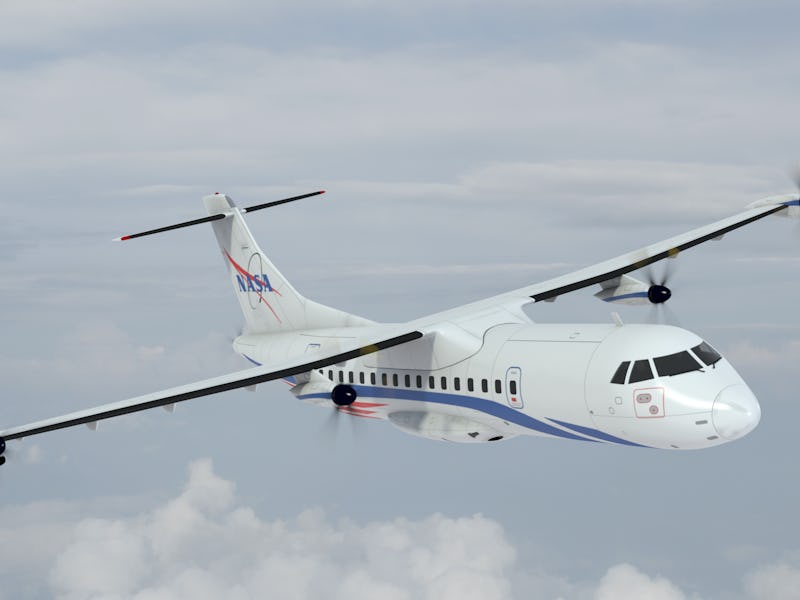NASA electric jet tests could finally bring the EV concept to life
NASA has big plans to electrify the skies, with an X-57 Maxwell experimental plane and calls for idea submissions.

NASA wants to bring electric airplanes to the skies, boosting the United States' competitiveness in aviation while also fighting climate change.
The space agency announced two important steps last week to encourage the fledgling sector. The first was a request for proposals to demonstrate a megawatt-class powertrain system that could be used in a subsonic aircraft. The second was a plan to test the agency's experimental all-electric X-57 Maxwell plane.
Why electric flight?: The moves are a welcome boost for the future of electric flight. The benefits are manifold: electric planes could cut operating costs while reducing energy usage and greenhouse gas emissions, critical as the aviation sector accounts for around two percent of carbon dioxide emissions.
What needs to happen: Electric planes are not easy. Tesla CEO Elon Musk explained in September 2018 that, while he liked the idea of an electric jet, it would probably require batteries with an energy density of around 500 watt-hours per kilogram. Tesla vehicles at the time shipped with a battery around half that density.
The energy conundrum has been spotted by other experts. Duncan Walker, senior lecturer in applied aerodynamics at Loughborough University, wrote in November 2019 on The Conversation that an Airbus A830 would require batteries 30 times heavier than its current fuel intake if it wanted to maintain its 9,300-mile range for a single flight.
A 2019 report from the International Air Transport Association claimed that 15-to-20-seat electric aircraft would likely arrive around 2030, while larger aircraft of up to 100 seats would arrive in 2050. But the report also explained that, with enough interest and funding, developers could speed up those estimates by five to 10 years.
NASA's announced steps could provide that boost. The agency's request for proposals is aimed at accelerating the development of the powertrain, the system that transfers energy into motion. This would be introduced into global fleet planes by 2035. Entrants have until 2:00 p.m. Pacific time on April 20, 2021 to submit their proposals.
About the X-57 Maxwell: The agency also plans to test its X-57 Maxwell plane. The craft takes an Italian Tecnam P2006T plane and adds an electric propulsion system. It uses two 400-pound lithium-ion battery packs, supplying 23 kilowatts of energy. NASA has added 12 small motors along the wing, which pair with the two larger motors at the end to add up to 14 motors.
The NASA all-electric X-57 plane preparing for ground vibration testing at the agency's flight research center in California.
NASA plans to host a high-voltage functional ground test, where the motors are powered up and the propellers spin, at the Armstrong Flight Research Center in Edwards, California. This test will precede final validation, before moving onto taxi tests. The first flight is expected later in 2021.
“Currently, we have a battery emulator that we’re using to provide power to the aircraft,” Nick Borer, an aerospace engineer at NASA’s Langley Research Center, told Gizmodo in a Monday story. “But this is the first time we’ve had the low-voltage and high-voltage systems operating together.”
The Inverse analysis: This could be a welcome boost for the industry.
It's not the first time NASA has boosted green aviation research. In January 2016, the agency announced that new technologies developed under the Environmentally Responsible Aviation project over six years could save airlines $255 billion. The research would also reduce fuel usage by 50 percent and pollution by 75 percent. In November 2017, Uber and NASA signed an agreement to explore traffic management systems for its flying car project.
Additionally, the GL-10, also known as Greased Lightning, flew in a 2015 test at a military base near NASA's Langley Research Center. The hybrid diesel-electric plane sported eight electric motors on the wings, two on the tail, and weighed 62 pounds maximum at takeoff.
As the world prepares for the next generation of aviation, NASA's X-57 could act as an early predecessor.
This article was originally published on